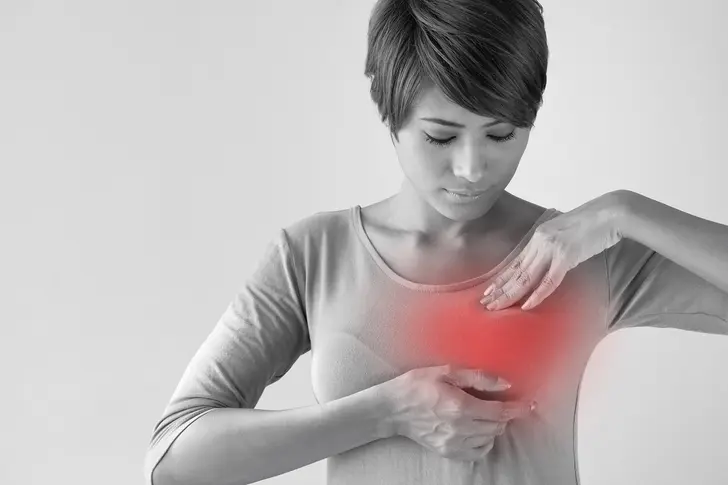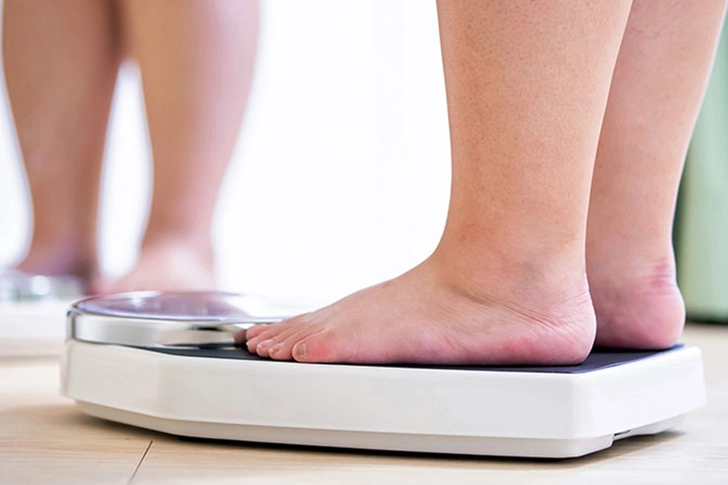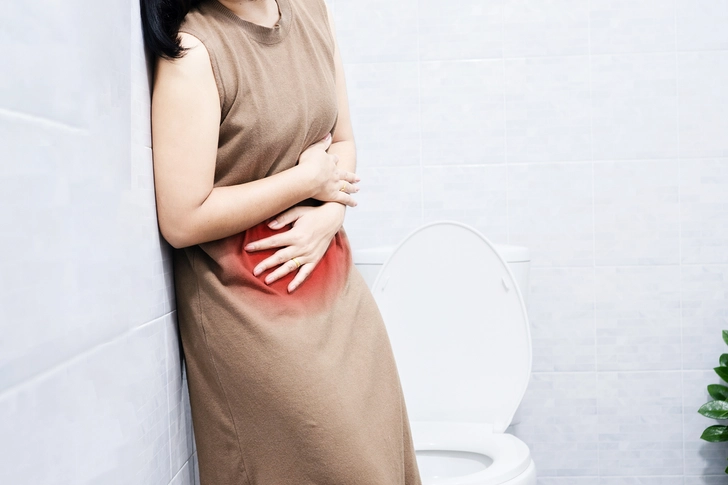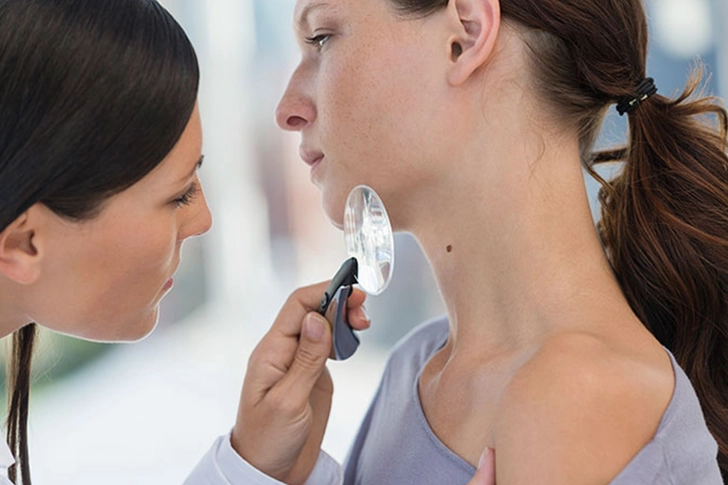- Overview
- Causes, Risks & Prevention
- Symptoms & Types
- Tests & Diagnosis
- Your Cancer Care Team
- Treatment & Side Effects
- Treatment Support
- Living With
- Remission & Recurrence
- Support & Resources
- Appointment Prep
- View Full Guide
Signs and Symptoms of Cancer in Women


Common Cancers in Women
Some of the most common cancer women get are: breast, colorectal (colon and rectum), lung, cervical, skin, and endometrial (lining of the uterus.) Many possible cancer symptoms can be caused by other health conditions, but it's a good idea to get any new symptoms checked out by your doctor.

Unexplained Weight Loss
If you lose 10 pounds or more without changing your diet or exercise habits, talk to your doctor. While there are other potential causes for unexplained weight loss, such as thyroid problems or depression, it's essential to rule out cancer.

Bloating
Persistent bloating or a feeling of fullness in the abdomen can be a sign of ovarian cancer, especially when accompanied by pelvic pain or changes in bathroom habits. While occasional bloating is normal, if it continues every day for a few weeks, see your doctor. Other possible symptoms include difficulty eating or feeling full quickly.

Breast or Nipple Changes
Regular breast self-exams are crucial for detecting changes that could indicate breast cancer. Look for lumps, thickening, or hardened knots in breast tissue or underarm areas. Other signs include changes in breast size or shape, dimpling or puckering of the skin, nipple inversion, redness or scaling of the nipple or breast skin, and nipple discharge. If you notice any of these changes, see your doctor.

Abnormal Bleeding
Bleeding between periods, after menopause, or following sex can be a sign of uterine cancer, including endometrial cancer. Other symptoms may include pelvic pain or pressure, and difficulty or pain when urinating. If you experience these symptoms, see your gynecologist.

Pelvic Pain
Pelvic pain, pain during sex, or unexplained weight loss also are possible warning signs of endometrial cancer, which affects the lining of the uterus. Endometrial cancer shares many symptoms with uterine cancer. Key warning signs include abnormal vaginal bleeding, spotting, or discharge, particularly after menopause.

Cervical Cancer Symptoms
Cervical cancer symptoms often don't appear until the cancer is more advanced, which is why regular Pap smears are recommended. However, possible signs include abnormal vaginal bleeding (after intercourse, between periods, or after menopause), unusual vaginal discharge, pelvic pain, and pain during intercourse. HPV infection is a major risk factor for cervical cancer. If you have these symptoms or haven't had a recent Pap smear, make an appointment with your gynecologist.

Skin Changes
Skin cancer is the most common cancer in the United States. Look for changes in existing moles or the appearance of new growths on your skin. Use the ABCDE rule: Asymmetry, Border irregularity, Color changes, Diameter larger than 6mm, and Evolving size, shape, or color. Don't forget to check areas like your scalp, between your toes, and under your nails. If you notice any suspicious changes, see a dermatologist for a skin exam. Regular self-checks and professional skin exams can help catch skin cancer early.

Persistent Cough or Hoarseness
A cough that doesn't go away after 3-4 weeks or hoarseness that persists for more than 6 weeks could be a sign of lung cancer or throat cancer. Other symptoms might include coughing up blood, chest pain, or shortness of breath. Smokers are at higher risk, but non-smokers can develop these cancers too.

Bowel Changes
Bowel changes can be a sign of colorectal cancer. This affects your rectum and colon. Tell your doctor if your poop habits change for more than a few days or if you have other symptoms like diarrhea, constipation, or thin, dark, or bloody poop. Other signs include belly pain or cramps, weakness and tiredness, and unexplained weight loss. Your doctor can check for colorectal cancer before you have symptoms. There are different tests, but one way is a colonoscopy, where they look inside your colon with a long, flexible tube.
PHOTO CREDENTIALS
Slide 1 - 9nong/Shutterstock
Slide 2 - RyanKing999/Getty Images
Slide 3 - Jo Panuwat D/Shutterstock
Slide 4 - FG Trade/Getty Images
Slide 5 - Doucefleur/Shutterstock
Slide 6 - Planter Studio/Shutterstock
Slide 7 - Satyrenko/Shutterstock
Slide 8 - Eric Audras/Getty Images
Slide 9 - Krakenimages.com/Getty Images
Slide 10 - Lordn/Shutterstock
SOURCES
American Cancer Society: “Cancer Facts for Women,” “Breast Cancer Signs and Symptoms,” “Signs and Symptoms of Colorectal Cancer,” “American Cancer Society Guideline for Colorectal Cancer Screening,” “Signs and Symptoms of Ovarian Cancer,” “Loss of Appetite,” Signs and Symptoms of Cancer,” “Signs and Symptoms of Lung Cancer,” “Nail Changes,” “How to Do a Skin Self-Exam,” “Signs and Symptoms of Oral Cavity and Oropharyngeal Cancer.”
MD Anderson Cancer Center: “10 cancer symptoms women shouldn’t ignore.”
National Breast Cancer Foundation: “Inflammatory Breast Cancer (IBC).”
Breastcancer.org: “Breast Self-Exam.”
Northwestern Medicine: “Symptoms of Gynecologic Cancers.”
Dana-Farber Cancer Institute: “Back Pain and Cancer: How Are They Related?” “Is a Headache a Sign of a Brain Tumor?” “Night Sweats: Are They a Symptom of Cancer?”
Mayo Clinic News Network: “What to know about pancreatic cancer.”
Rush University Medical Center: “5 Early Signs of Ovarian Cancer.”
Penn Medicine Lancaster General Health: “11 Cancer Symptoms Women Shouldn’t Ignore.”
Lung India: “Digital Clubbing.”
Cancer.net: “Difficulty Swallowing or Dysphagia.”
Johns Hopkins Medicine: “Early Cancer Warning Signs: 5 Symptoms You Shouldn’t Ignore.”